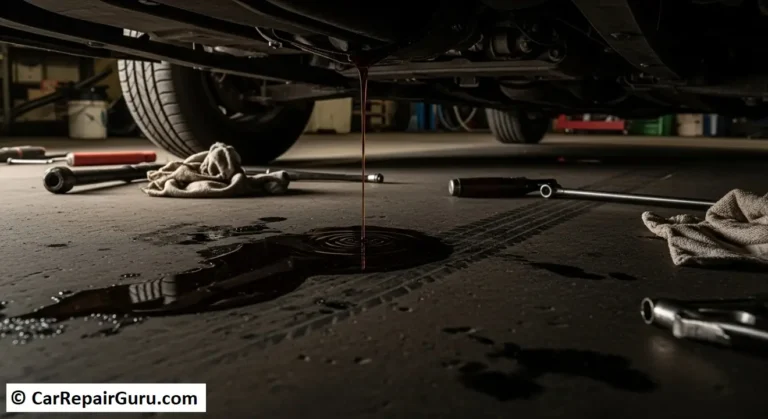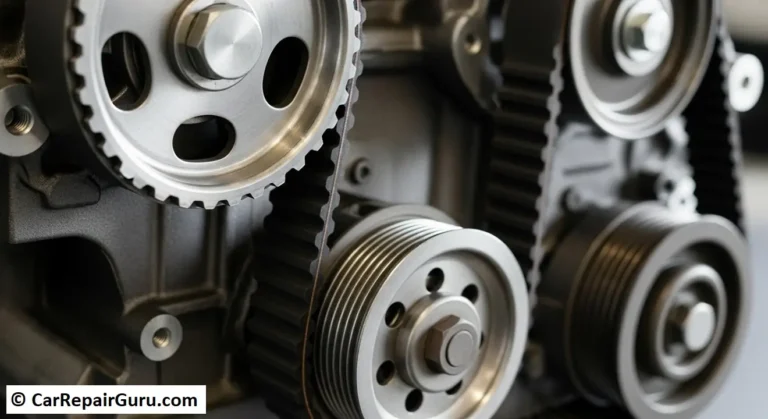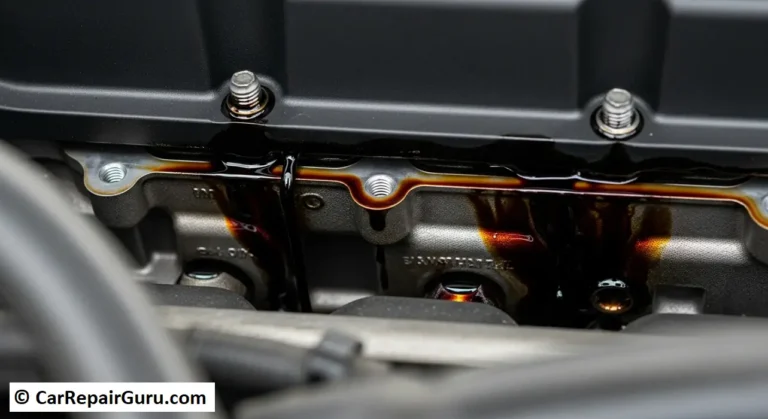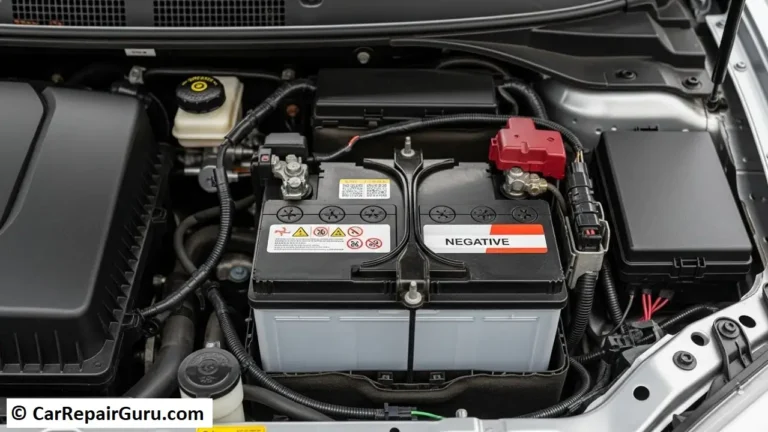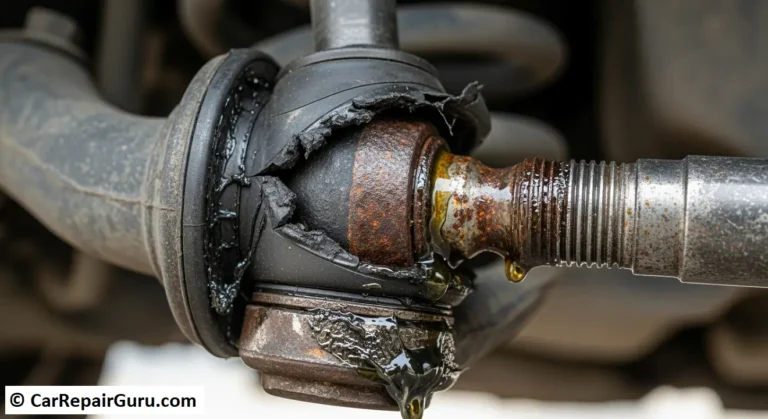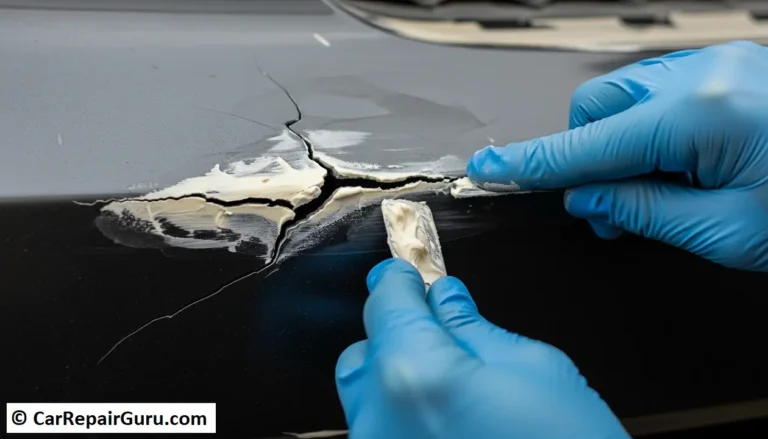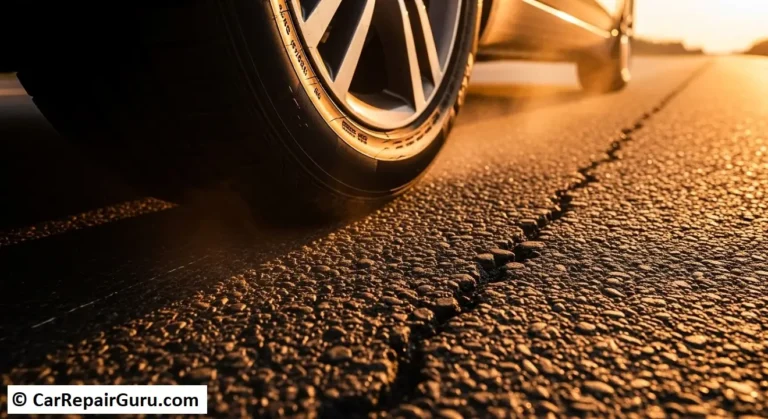
There are few moments more stressful behind the wheel than when your engine suddenly goes quiet. That sinking feeling as the power cuts out, whether you’re in heavy traffic or at a stoplight, is something no driver wants to experience. An engine stalling event is not just an inconvenience; it can be a serious safety hazard.
But what does it mean? And more importantly, what should you do about it?
You’ve come to the right place. This comprehensive guide will walk you through everything you need to know about a stalling engine. We’ll cover immediate safety steps, the most common causes from simple to complex, and how to tell the difference between a stall and other car troubles. Consider this your roadmap from panic to peace of mind.
Key Symptoms of a Stalling Engine
An engine stall is when your engine stops running unexpectedly. Sometimes it happens without any warning at all. Often, however, your car will give you clues that something is wrong. Paying attention to these warning signs can help you address the problem before you end up stranded.
Before the Stall – Common Warning Signs
- Check Engine Light: This is your car’s primary way of telling you something is wrong. If it’s on, especially combined with other symptoms, don’t ignore it.
- Rough or Erratic Idling: Does your car shake, vibrate, or sound like it’s struggling to stay running when you’re stopped at a light? This is a classic precursor to an engine stalls at idle situation.
- Sputtering or Engine Hesitation: When you press the gas pedal, does the car stumble or hesitate before accelerating? This indicates a problem with the fuel or air delivery.
- Noticeable Loss of Power: The car feels sluggish and weak, struggling to get up hills or maintain speed on the highway.
- Strange Noises: Listen for new sounds like a high-pitched whining from the back of the car (a potential fuel pump issue) or a hissing sound from the engine bay (a possible vacuum leak).
- Dies with Accessories On: A tell-tale sign of a weak electrical system is the engine stalling when you turn on the air conditioning or other high-draw accessories.
What to Do When Your Engine Stalls While Driving
If your car stalls while driving, your first priority is the safety of yourself and others. Panic is your enemy. Follow these steps calmly and deliberately.
1. Stay Calm and Maintain Control: Your first instinct might be to panic, but a clear head is essential. Keep a firm grip on the steering wheel.
2. Shift to Neutral: This disengages the engine from the wheels, which can make the car easier to control as it coasts.
3. Signal and Steer to a Safe Location: Immediately turn on your turn signal. Begin steering toward the shoulder, an emergency lane, or a side street. Be prepared: You will lose your power steering and power brakes. The steering wheel and brake pedal will feel extremely stiff. You can still steer and brake, but it will require significantly more physical effort.
4. Turn on Your Hazard Lights: Once you’re moving toward safety, switch on your emergency flashers to alert other drivers that you are having a problem.
5. Attempt a Restart (Only When Safely Pulled Over): Once you have come to a complete and safe stop, put the car in Park (P) or Neutral (N) and try to restart the engine. If it starts, proceed with caution to a mechanic. If it doesn’t, don’t keep cranking the engine, as this can drain the battery or cause more damage.
Call for Help: If you are in an unsafe location or the car won’t restart, it’s time to call for roadside assistance. Your safety is more important than trying to diagnose the problem on the side of a busy road.
Why Does My Car Stall? Top 9 Common Causes
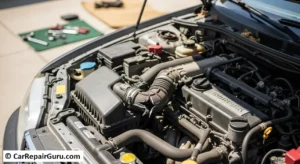
Now that you’re safe, let’s explore the question on your mind: “Why does my car stall?” Most engine stalling causes fall into one of four main systems: fuel, air, ignition, or electrical.
1. Fuel System Problems
Your engine needs a precise, uninterrupted flow of fuel. When it doesn’t get it, it stalls.
Clogged Fuel Filter: Think of this as the coffee filter for your car’s gasoline. Over time, it gets clogged with sediment and debris. A clogged filter restricts fuel flow, starving the engine, especially under load (like accelerating or climbing a hill).
Failing Fuel Pump: The fuel pump is the heart of the fuel system, pushing gasoline from the tank to the engine. When it starts to fail, it can’t provide consistent pressure, leading to hesitation and stalling. You might hear a whining noise from the rear of the vehicle before it fails completely.
Dirty Fuel Injectors: These tiny nozzles spray a fine mist of fuel into the engine. If they become clogged with carbon deposits, they can disrupt the fuel spray pattern, causing a rough idle and eventually a stall.
2. Air Intake & Vacuum Issues
Just as important as fuel is air. A modern engine needs a specific air-to-fuel ratio to run efficiently.
- Dirty Mass Airflow (MAF) Sensor: The MAF sensor measures the amount of air entering the engine and tells the computer how much fuel to inject. If it’s dirty, it sends inaccurate data, leading to an improper air-fuel mixture and stalling.
- Faulty Idle Air Control (IAC) Valve: This component’s entire job is to manage your engine’s speed at idle. A stuck or failing IAC valve is a primary suspect if your engine stalls at idle or when you come to a stop.
- Vacuum Leaks: Your engine operates under a vacuum. Cracked or disconnected hoses can create a leak, letting in unmeasured air. This throws off the air-fuel ratio, causing a high or rough idle, a hissing sound, and stalling.
3. Ignition System Failures
Fuel and air are useless without a spark to ignite them.
- Worn-Out Spark Plugs or Bad Coils: Spark plugs create the spark, and ignition coils provide the high voltage they need. If they are old or failing, you’ll get a weak or inconsistent spark, leading to misfires (that stumbling feeling) and stalling.
- Failing Crankshaft Position Sensor: This critical sensor tells the engine’s computer the rotational speed and position of the crankshaft. If this sensor fails, the computer loses track of the engine’s timing and will shut off the spark and fuel delivery as a safety measure, causing an abrupt stall, often with no warning.
4. Electrical System Malfunctions
Failing Alternator: The alternator recharges the battery and powers the electrical system while the car is running. If it fails, the car will run solely off the battery’s power until it’s depleted. You’ll see the battery warning light come on, and then the car will stall and won’t be able to restart.
Troubleshooting – Diagnosing Stalls in Specific Situations
Where and when your car stalls can give you big clues about the root cause.
Engine Stalls While Driving: This often points to a component that cuts out completely, like a failing fuel pump, a bad alternator, or a faulty crankshaft position sensor.
Engine Stalls at Idle or When Coming to a Stop: The most likely culprits here are a faulty Idle Air Control (IAC) valve, a dirty throttle body, or a significant vacuum leak.
Engine Stalls and Won’t Start Again: This suggests a more serious failure. Common causes include a completely dead fuel pump, a failed crankshaft sensor, or a total electrical system failure from a dead alternator and battery.
Engine Stalls Only When It’s Raining or Wet: This almost certainly indicates an electrical issue. Moisture could be getting into a cracked ignition coil, an exposed sensor connection, or old spark plug wires, causing a short circuit.
Engine Stalling vs. Similar Issues (Is It Really a Stall?)
Sometimes, what feels like a stall is actually a different problem. Knowing the difference can help you communicate more clearly with your mechanic.
- Stalling vs. Engine Misfire:
- Misfire: The engine is still running, but it feels like it’s shaking, stumbling, or hesitating. It’s a symptom that can lead to a stall.
- Stall: The engine completely stops running and goes quiet. The RPMs drop to zero.
- Stalling vs. a No-Start Condition:
- No-Start: You turn the key, and the engine fails to fire up from a stopped state. It either cranks without starting or does nothing at all.
- Stall: The engine was already running, and then it died.
- Stalling vs. Transmission “Limp Mode”:
- Limp Mode: The engine is still running, but the car’s computer has detected a serious problem (often in the transmission) and has severely restricted power and shifting to prevent further damage. You’ll have very poor acceleration, but the engine itself hasn’t shut off.
How to Fix a Stalling Engine – DIY vs. Professional Help
While some issues require a professional touch, there are a few things you can check yourself.
Simple DIY Checks You Can Perform
- Check the Gas Cap: A loose or faulty gas cap can sometimes disrupt the fuel tank’s pressure and cause issues. Make sure it’s tight.
- Inspect the Air Filter: A severely clogged air filter can choke the engine of air. It’s usually easy to access and check.
- Check Battery Terminals: Look for heavy, crusty corrosion on your battery terminals. A poor connection here can cause all sorts of electrical gremlins, including stalling.
When to Call a Certified Mechanic
For most engine stalling causes, professional help is the safest and most effective route. Call a mechanic if:
- The Check Engine Light is on. They have the tools to scan the codes and pinpoint the problem.
- The stalling is frequent, unpredictable, or happens at high speeds.
- You suspect the issue is the fuel pump, alternator, or a critical sensor. These repairs are complex and vital to your vehicle’s operation.
How Much Does It Cost to Fix an Engine Stall?
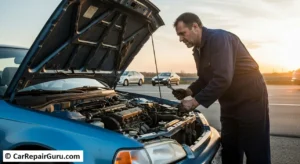
The stalling engine repair cost can vary dramatically depending on the cause. A simple fix might be under a hundred dollars, while a major component replacement can be much more.
Disclaimer: These are general estimates. Costs will vary based on your vehicle’s make and model, your location, and local labor rates.
| Potential Repair | Estimated Cost Range | Primary Reason for Stall |
|---|---|---|
| Fuel Filter Replacement | $75 – $250 | Fuel Starvation |
| Spark Plug Replacement | $150 – $400 | Ignition Misfire |
| Clean Throttle Body/MAF Sensor | $100 – $300 | Improper Airflow |
| Idle Air Control Valve | $150 – $500 | Stalling at Idle |
| Crankshaft Position Sensor | $200 – $600 | Abrupt Stalling, No-Start |
| Alternator Replacement | $400 – $900+ | Electrical System Failure |
| Fuel Pump Replacement | $500 – $1,200+ | Fuel Starvation, No-Start |
How to Prevent Your Engine From Stalling
The best repair is the one you never have to make. Practicing good preventative maintenance is key.
- Follow Your Vehicle’s Regular Maintenance Schedule: This includes changing filters, fluids, and spark plugs at the recommended intervals.
- Don’t Ignore the Check Engine Light: It’s an early warning system. Getting it checked promptly can prevent a small issue from becoming a big, stall-inducing problem.
- Use High-Quality Fuel: Better fuel often contains detergents that help keep your fuel system clean.
- Listen to Your Car: Pay attention to how your car sounds and feels every day. If you notice a new noise or a change in performance, get it investigated.
Taking Control When Your Engine Stops
We’ve covered a lot of ground, from the heart-stopping moment of a stall to the intricate reasons behind it. The most important thing to remember is that while an engine stalling is a serious issue, it’s also a solvable one.
The key is to react correctly in the moment—prioritizing safety above all else—and then to approach the problem methodically. By understanding the common warning signs like a rough idle or a check engine light, you can often address the root cause before it leaves you stranded. Whether it’s a simple fuel filter or a more complex sensor, every stalling issue has a logical cause related to your engine’s need for fuel, air, spark, and electricity.
You are now equipped with the knowledge to understand what your car might be trying to tell you, what to do in an emergency, and when to seek professional help. Don’t let the fear of the unknown keep you from driving with confidence. Be proactive with your vehicle’s maintenance, listen for the clues it gives you, and never hesitate to let a certified mechanic take the guesswork out of a repair.
Frequently Asked Questions (FAQ)
Can low oil cause an engine to stall?
Yes, it can. If the oil level is critically low, the oil pressure will drop. Many modern cars have a safety feature that will shut down the engine to prevent catastrophic damage like seizing.
Is a stalling engine dangerous?
Absolutely. A stall causes an immediate loss of power steering and power brakes, making the vehicle much harder to control, especially at speed or in a turn. This is why knowing the correct safety procedure is so important.
Will a bad battery cause a car to stall?
It’s less common for a bad battery to cause a stall while driving, but it can happen. The more likely culprit is a faulty alternator that fails to charge the battery. The car then runs on battery power alone until it’s fully drained, causing a stall.
Can a bad transmission cause an engine to stall?
Yes, particularly in a car with an automatic transmission. A failing torque converter can fail to disengage properly when you come to a stop. This has the same effect as not pressing the clutch in a manual car—it chokes the engine and causes it to stall.
Why does my car only stall when I turn on the AC?
The air conditioning compressor puts a significant load on the engine. A healthy engine automatically increases its idle speed to compensate. If your engine stalls when the AC is turned on, it points to an underlying weakness. The most common causes are a faulty Idle Air Control (IAC) valve that can’t adjust the idle, or a failing alternator that can’t handle the extra electrical demand.
